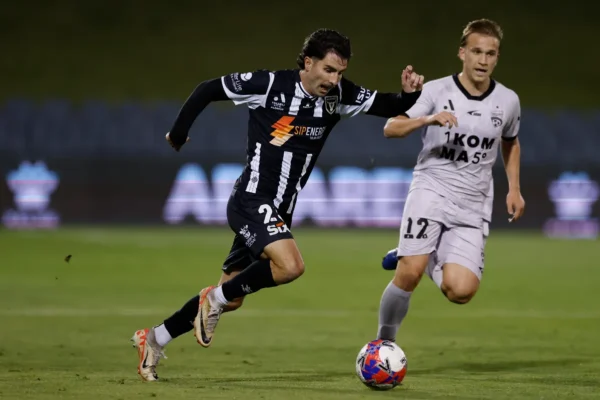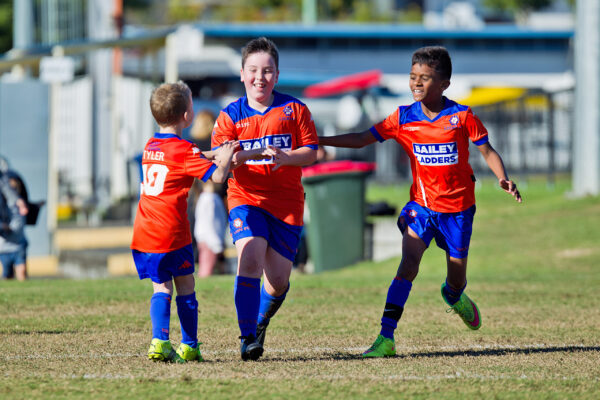
Just over 30 years ago, a decision was made to shift the top tier of Australian domestic football from winter to the summer months. Five days ago, a decision appears to have been made to switch it back.
Thus is the beautiful game down under.
Such an about turn is systematic of football in Australia, with the game rarely given any chance to settle, find its niche and become a consistent and predictable presence in the Australian sporting landscape.
For whatever reason, those who have arisen to power in the Australian game have historically held the belief that they knew what was best for it. As that power was passed from one to another, each recipient implemented the changes they felt would be advantageous for the game.
In reality, the consistent changes and alterations made to Australian football has weakened it. Egos and agendas have directed the game, many without the best interests of it at heart.
No doubt, FFA boss James Johnson has his own vision for the game and the business acumen, football knowledge and street cred required to do a stellar job in his new role. His preference to move to winter football to cope with the drastically altered schedule caused by the COVID-19 pandemic was not particularly well cloaked. Nor it appears, did he intend it to be.
Citing a need for the game to move forward under the one umbrella, Johnson clearly sees value in having NPL and junior competitions taking place concurrently with the A and W Leagues.
However, it might serve people well to recall the reasons why the game did first move into the summer months for the 1989/90 NSL season and the frustrations that brought that decision to pass.
As far back as the mid-1960’s there had been ideas centred around creating a national football competition in Australia. True to form, initial concerns were raised by the state federations.
It appears that the mere suggestion of a uniformed national competition raised their ire, with a concern emerging that status and influence within their own state borders may be lessened. Not much has changed I guess.
It took some time, 1977 in fact, for a consensus to be reached and the first incarnation of the National Soccer League to take shape, with 14 clubs selected to participate.
In essence, that should have been it. With a league in place, all that was required was to begin formulating a second division and a fair and just interstate play-off system to determine those clubs to be promoted in replace of those relegated at the completion of each season. From there, natural attrition would take place and clubs’ financial positions and decision making structures would determine who survived and who did not.
Instead, Australian football went down the path of constant tinkering and adjustment, things that have done little more than weaken the appeal of the competition to potential new fans and make it something of a farce to many in the broader sports loving Australian public.
An early experiment with northern and southern conferences was embarked upon; no doubt an attempt to cap costs for clubs struggling with the financial demands of travel and accommodation. That was to die a brisk death, as was the move to a ‘first past the post’ championship winning team, something the domestic game had not seen due to an assumed Australian preference for semi, preliminary and grand finals. It took just a season for those finals matches to be re-instated.
Hell bent on searching for a football elixir that frankly does not exist, the plan to enjoy some ‘clean air’ and move football to the summer months was hatched. The fundamental reasoning by the powers at be were threefold. The weather was warmer, pitches of a better quality and without rugby league and AFL competition, the hope was that football may find its niche.
It may have given time, yet the powers at be were not finished fiddling with and fossicking around the game.
The migrant heritages of NSL clubs was the next aspect to come under siege. Authorities encouraged fans to embrace the new agenda in order to become more attractive to mainstream Australian society. Many fans become incensed at the jettisoning of the history and culture that had helped form and strengthen their clubs in the first place.
Not long after, the emergence of teams named Collingwood Warriors and Carlton reeked of a cheap attempt to infiltrate the AFL market and as the clubs’ identities became less and less assured, the league slipped further and further into decline.
That lack of identity, fans and money had the competition on its knees by 2004 and effectively, dead.
When the A-League launched for the 2005/06 season, there was much fanfare. Played in summer and refreshed with newly branded clubs designed to appeal to a broader section of the Australian community than ever before, there were clear ups and downs.
Some franchises capitulated, yet a core group survived the first 15 years, despite the financial constraints of a salary cap and the challenges of running a professional sports team in Australia.
By 2019, after years of cries for it to happen, the league was set to expand. New teams in both Melbourne and Sydney would result in an eventual 12 team competition by 2021. An average of 10,000 people attended matches and around 126,000 had become official members of the clubs. FFA data also showed that the number of Australians showing allegiance to a team had never been higher.
Yet in 2020, it now appears the game is once again on the move. It could well be the right one, yet with another major shake-up destined to send Australia’s top league a few steps back before hopefully lurching forward in the future, one might ask when football might be left alone long enough to grow, without administrative force-feeding.
The longer it takes for the elite competition to truly find a foothold and flourish, the more attractive tinkering and tweaking appears to be. Sadly, each effort sends the game backwards for a short time and the process begins all over again.
Both the NSL and now the A-League have struggled to find a set of unique identifiers that helped define them clearly to Australian sports fans. Shifting goal posts gave them little chance to do so.
Having new fans attach themselves to a league becomes increasingly difficult when the subject of their interest is constantly moving.


















